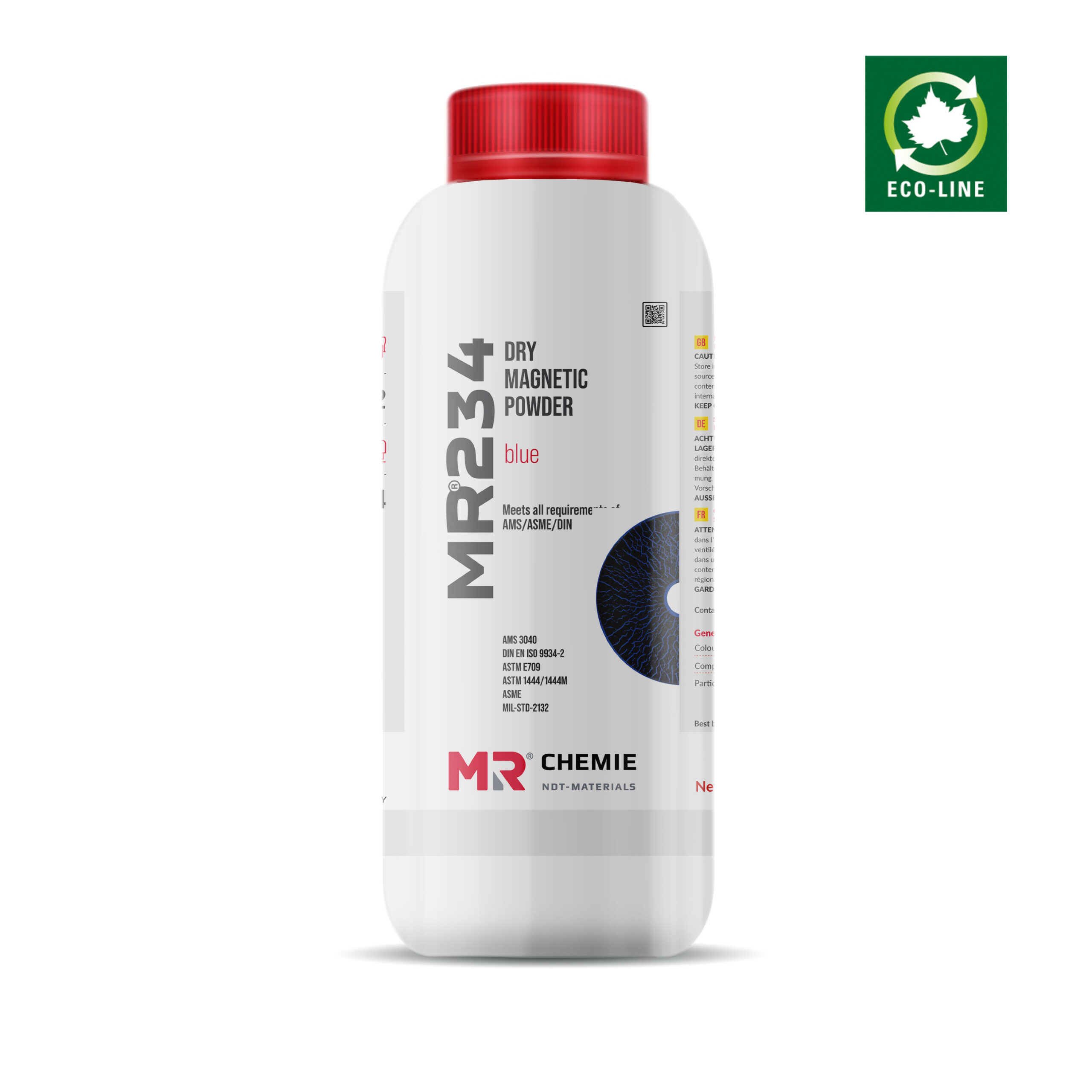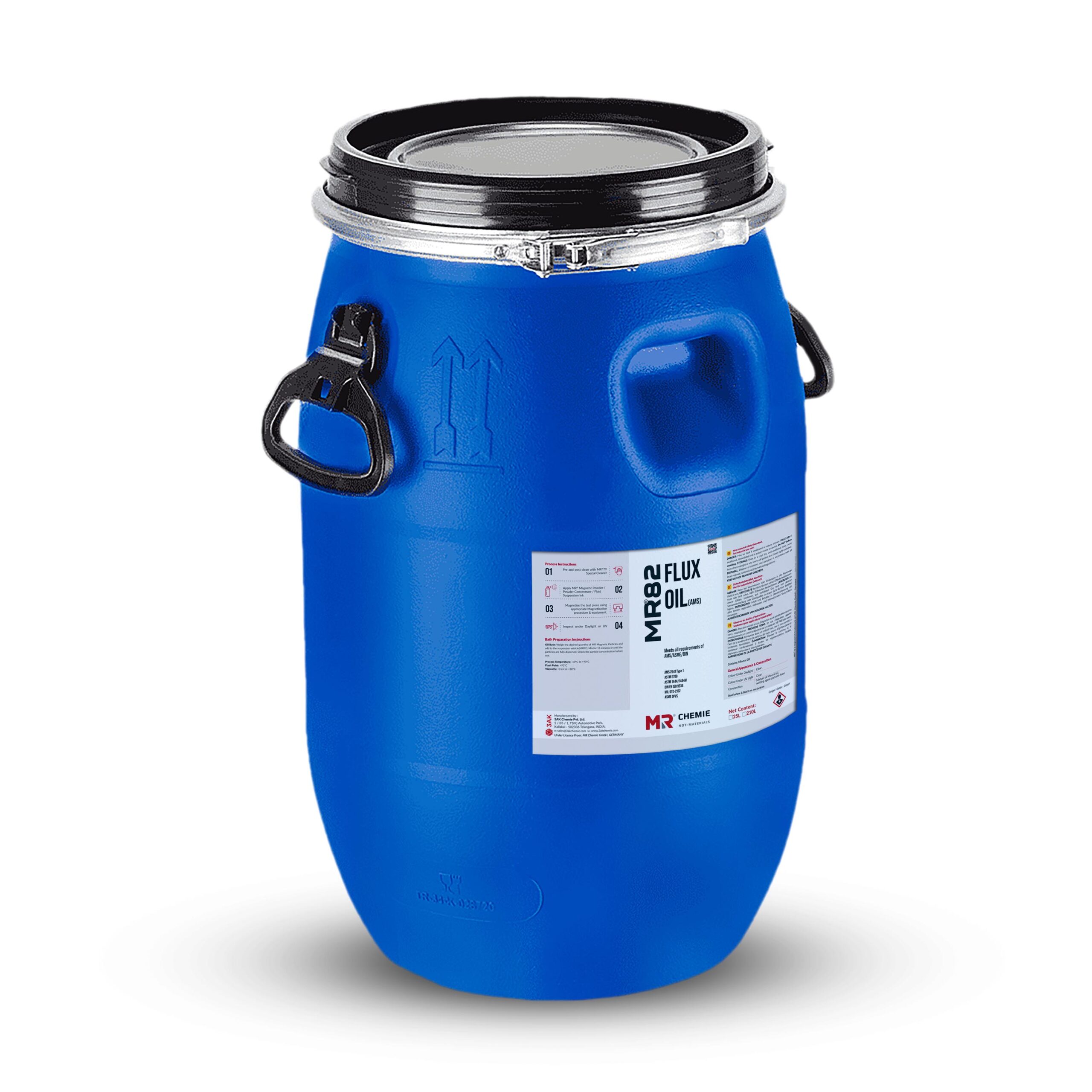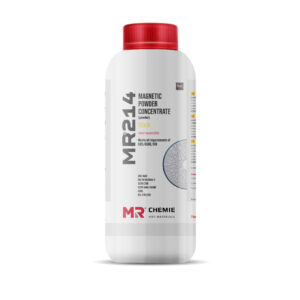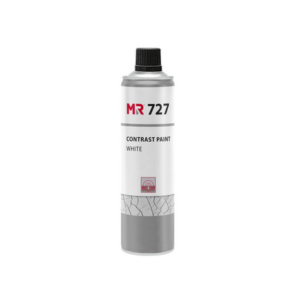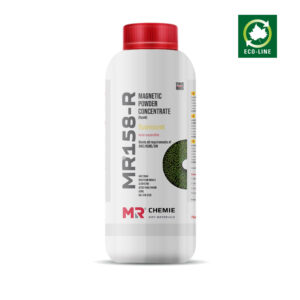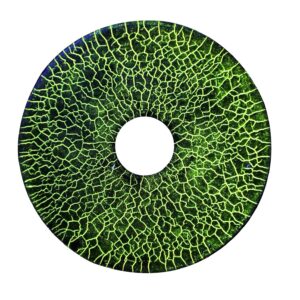MR®82 – Flux Oil (AMS)
MR®82 is a no-odour, very high flash point – petroleum-based high-purity NDT-approved suspension vehicle specifically for wet method magnetic particle testing and is compatible with all the MR® range of Magnetic powders. It provides excellent particle mobility, good suspension stability and enhanced corrosion protection for reliable, spec-compliant magnetic particle testing.
| SKU | Pack Size | Case Size |
| 2511-0063 | Bulk 25L | – |
| 2511-0061 | Bulk 205L | – |
| 2511-0131 | Bulk 210L | – |
Additional information
| Properties | Appearance – clear oily liquid |
|---|---|
| Approvals | EN ISO 9934-2 |
| Family Testing | compatible with all the MR® range of Magnetic powder |
| Recommended Usage | NDT Method – Magnetic Particle Testing (wet method) |
Features
- Odourless
- Superior wetting - provides excellent particle mobility
- Optimal corrosion protection
- Clear liquid under white light
- No self fluorescence
- High Flash Point (> +93 °C)
- Free of aromatics, oil-based
- Low-toxicity
- Toluene free
How it Works
Magnetic particle inspection (MPI) is a non-destructive testing (NDT) method used to detect surface and slightly subsurface cracks in ferromagnetic materials such as iron, steel, and nickel. The process involves magnetizing the part to be inspected and then applying appropriate magnetic particles in the form of a dry powder or suspension to the surface of the part. The magnetic particles are attracted to areas of flux leakage, which are areas where the magnetic field is distorted by the presence of a crack or other defect creating a visible indication that can be used to identify and evaluate the nature and extent of the defect.
The application of the magnetic powder creates a visible indication of the location and shape of the crack or other defect. The powder accumulates at the location of the defect, forming a visible indication or "magnetic particle indication." This indication is then examined by a trained inspector using ultraviolet light or other illumination to identify the precise location, size, and orientation of the defect.
GHS
Aerosol UN Model Regulation - UN 1950 AEROSOLS, 2.1FAQ
Q: What is MPI testing? A: MPI (Magnetic Particle Inspection) testing is a non-destructive testing method used to detect surface and slightly subsurface defects in ferromagnetic materials such as iron, nickel, and cobalt. It is commonly used in industries such as aerospace, automotive, and oil and gas. Q: Are there various kinds of black inks available? A: Yes, there are different versions of black ink avaiable depending on the form and suspension liquid. Q: What is the difference between the various versions of MR76S? A: MR76S comes in various versions (Version A, B, C, D, S) depending on the sediment levels. The standard MR76S (Version A) comes with a sediment of 1.2-2.4 ml/100ml (1 h) according to the ASME standard. Q: How is the black ink applied during MPI testing? A: The black ink is typically applied to the surface being inspected by either spraying or brushing it on. Q: Is the black ink used in MPI testing safe? A: Yes, the black ink used in MPI testing is generally safe to use. However, it is important to follow the manufacturer's instructions and safety precautions when handling and using the ink. An oil free version of MR76S is available as MR76SR. Q: Can other colors be used instead of black ink in MPI testing? A: Yes, other colors such as red, blue, and green can be used in MPI testing. However, black ink is the most commonly used color because it provides the highest contrast and is therefore the easiest to interpret. Q: What happens if MR76S is oversprayed? A: MR76S is designed to offer excellent particle mobility reducing the background even when oversprayed. Q: What is Super Wetting Technology (SWT) in MR76S? A: SWT is a proprietary technology used in preparing MR76S which enhances the particle mobility, reduces the background, super wets the carrier media for quick indications and increases particle build-up, thereby increasing the sensitivity significantly.Technology
- Protection of the core material - Encapsulation provides a protective barrier around the core material, which can help to prevent degradation or loss of magnetic activity due to exposure from carrier media - oil or water and other additives. This can extend the shelf life of the product and improve its effectiveness.
- Improved stability: Encapsulation can improve the stability of the coating material by eliminating free unbonded pigment, thereby reducing the background and enhacing the stability.
- Versatility: Our Encapsulation technology is versatile and can be used with a wide range of core materials and encapsulating materials which helps us develop various products and compatible with aqueous based, hydrocarbon based and aerosols.
- Particle Size: Our controlled spray encapsulation method and miling allows us to precisely engineer particle size and offer batch consisitency from as low as 0.2 to 75 µm.
- Particle Shape - The core material is carefully milled to a unique physical morphology of the particle that offers high mobility, attraction and retention.
